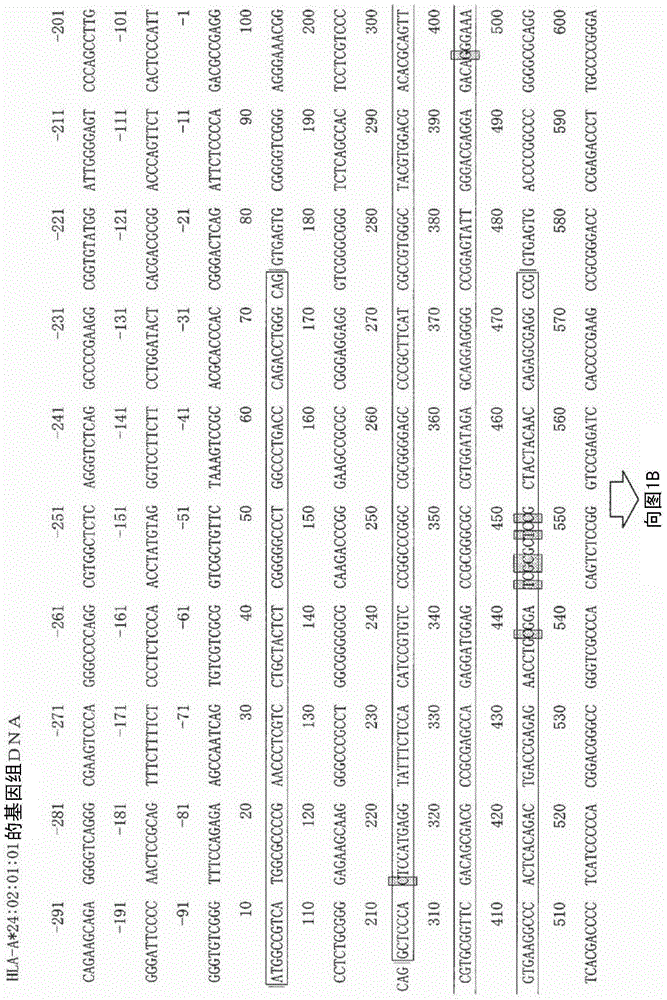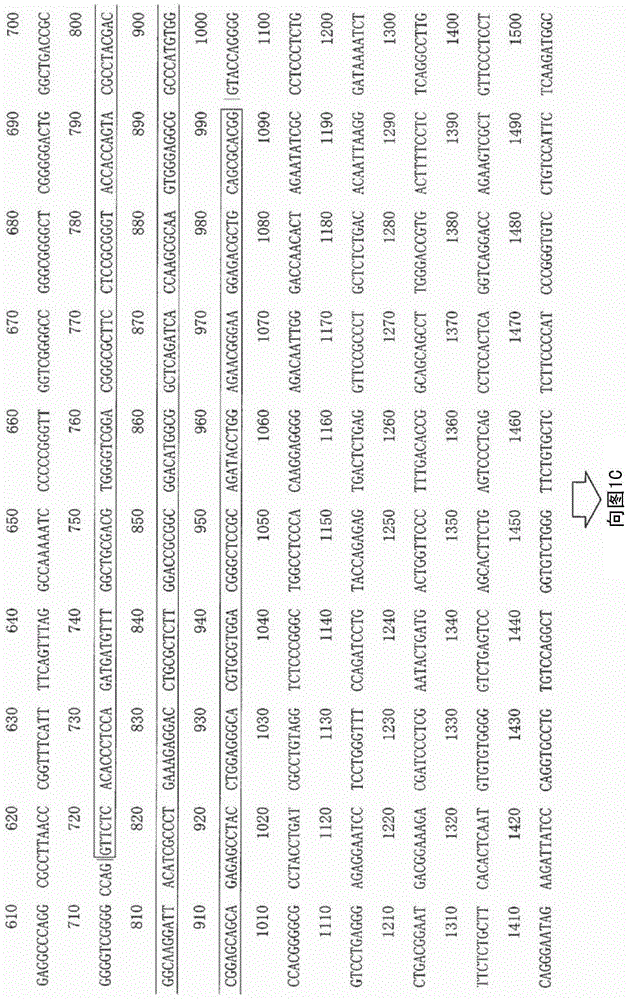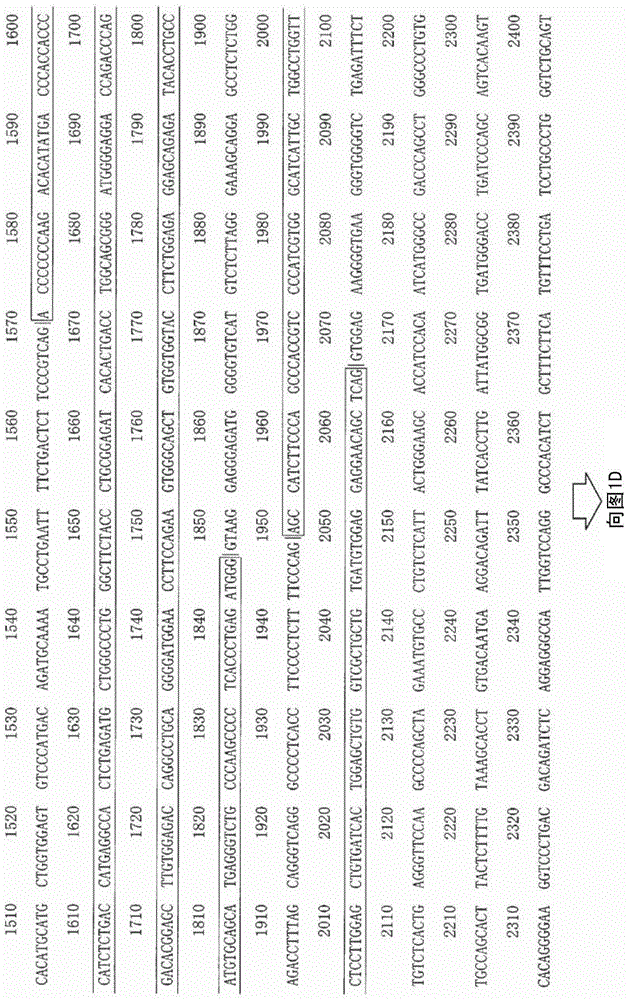Method for determining HLA-A*24 group
A technology of HLA-A and determination method, which is applied in the determination/inspection of microorganisms, biochemical equipment and methods, recombinant DNA technology, etc., can solve the problems of labor-consuming, differences in HLA type distribution, etc., and achieve the effect of simple and accurate accuracy
- Summary
- Abstract
- Description
- Claims
- Application Information
AI Technical Summary
Problems solved by technology
Method used
Image
Examples
Embodiment 1
[0091] The HLA-A type is the same type of [A*24:02 / A*24:02], the heterotype of [A*24:02 / A*24:08], [A*24:20 / A*32: 01] and [A*32:01 / A*24:04] isotypes of subjects with genomic DNA extracted from the biological samples as a template, using the primer-1 and primer-2 shown in Table 8 to implement PCR, and PCR performed using primer-3 and primer-4, sequence analysis was performed on each PCR product.
[0092] Table 11 shows the results of the sequence analysis and the judgment results based on the obtained typing results. In the table, "+" in the column of "judgment" indicates the determination that the genomic DNA contains HLA-A*24:02, and "-" indicates the determination that the genomic DNA does not contain HLA-A*24:02, respectively. As a result, [A*24:02 / A*24:02] homotype, [A*24:02 / A*24:08] heterotype and [A*32:01 / A*24:04] heterotype are all was accurately judged. On the other hand, the outlier of [A*24:20 / A*32:01] is a false positive, as speculated.
[0093] Table 11
[0094...
Embodiment 2
[0096]Except using Primer-5 shown in Table 9 instead of Primer-4, the same operation was performed as in Example 1, so that the HLA-A type was [A*24:02 / A*24:02] isotype, [A *24:02 / A*24:08], [A*24:20 / A*32:01] and [A*32:01 / A*24:04] subjects Genomic DNA extracted from a biological sample is used as a template for PCR. As a result, by PCR using primer-3 and primer-5, PCR products were obtained even when any genomic DNA was used as a template. Therefore, the genomic DNA typing of all subjects is: the 437th base is C, the 441st base is T, the 443rd base is G, the 444th base is C, and the 447th base is C. The base is T, and the 449th base is C. When sequence analysis was performed on each PCR product, as shown in Table 12, the same determination results as in Example 8 were obtained. However, when the heterotyped genomic DNA from [A*32:01 / A*24:04] was used, the base (b) in Example 1 was typed into C and G, but in this embodiment The base in (b) in the example is only typed as C. ...
PUM
 Login to View More
Login to View More Abstract
Description
Claims
Application Information
 Login to View More
Login to View More - R&D
- Intellectual Property
- Life Sciences
- Materials
- Tech Scout
- Unparalleled Data Quality
- Higher Quality Content
- 60% Fewer Hallucinations
Browse by: Latest US Patents, China's latest patents, Technical Efficacy Thesaurus, Application Domain, Technology Topic, Popular Technical Reports.
© 2025 PatSnap. All rights reserved.Legal|Privacy policy|Modern Slavery Act Transparency Statement|Sitemap|About US| Contact US: help@patsnap.com



